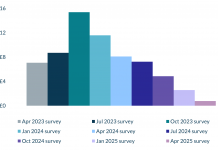 In this sponsored post, Opus Energy outlines how incoming contract switching rule changes could ease the pain – and the cost – of sitting out expensive energy contracts.
In this sponsored post, Opus Energy outlines how incoming contract switching rule changes could ease the pain – and the cost – of sitting out expensive energy contracts.
When you’ve got dozens (or even hundreds) of business energy contracts with different start and end dates, the switching process can be anything but simple. Your new supplier is incentivised to work around your site schedule and do their best to get your supply transferred as soon as possible, but what about your old supplier? Earlier this year, Ofgem reported that switching levels are at the highest they’ve been for four years, bringing along with them a renewed interest in the switching process. With the switching trend consistent across both the domestic and business energy markets, customers on both sides are putting pressure on suppliers to ensure that services for contracts are streamlined and transparent, and switches are made quickly.
The interest in switching has not gone unnoticed, as it was announced last month that legislation proposed by the CMA would be powering ahead to better remedy the energy market. Specifically, this has seen the introduction of the Better Markets Bill: paving the way to open up markets and give the customer greater power and choice. This encompasses faster CMA decisions, simplifying the way economic regulators work, and many other initiatives to cut red tape – including, importantly, the key element of speeding up energy supplier switches.
Faster switching means the customer’s business is less at the mercy of the suppliers’ timelines, reducing their risk of sitting on expensive out of contract rates while waiting for a switch to go through. To give more remit to the customer and strengthen competition in the market, Ofgem’s Switching Programme has set radical targets to turn around these historically slow-moving, methodical processes – hoping to bring into force next-day switching by 2019.
This involves a lot of legwork to detangle a notoriously complex system. The entire initiative requires the existing gas and electricity switching services to be replaced by a brand new, centralised switching service, which will be run by Data and Communications Company (DCC).
Currently, Ofgem are working on its Switching Significant Code Review (SCR), examining how they can go about changing the multiple industry codes and licence conditions needed to allow for 24 hour switching. Whilst in the blueprint stage for now, proceedings are expected to fully kick off in 2017 with the issue of a large RFI to gather opinions on costs, timing and challenges of any proposed arrangements at that point – with a consultation predicted to be issued towards the end of that year.
While all of this is good news for the future, there are things you can do to help reduce your switching times when changing supplier now. Start with your new supplier. Look for someone who can organise around your site schedule and coordinate all of the paperwork and requests on your behalf. Then, you’ll need to check timelines – most suppliers need anywhere between 60 and 90 days’ notice before leaving, while your new supplier may also have a lengthy switchover period – at Opus Energy, we aim to switch all electricity customers in just three to five working days. Next, make sure to contact your existing supplier so you can resolve any outstanding balance issues or missing information that can slow down the process. Finally, remember to consider any site additions you have – they will need to be accounted for by your new supplier if they are joining an existing contract at a later date.
Find out more at opusenergy.com
Related stories:
Opus targets large corporates with gas product
Brexit or Remit: what matters most to energy managers?
CMA allows suppliers to contract rivals’ small business customers, orders end to contract penalties
Competition watchdog orders Decc and Ofgem to speed half-hourly settlement
Click here to see if you qualify for a free subscription to the print magazine, or to renew.
Follow us at @EnergystMedia. For regular bulletins, sign up for the free newsletter.



